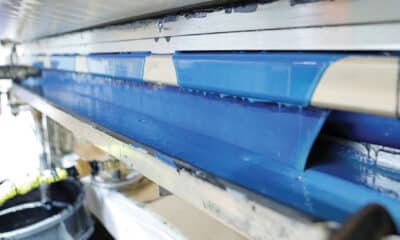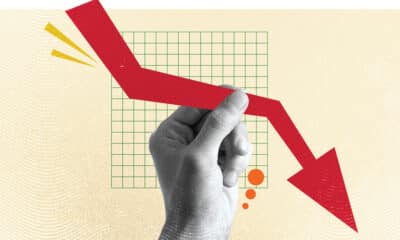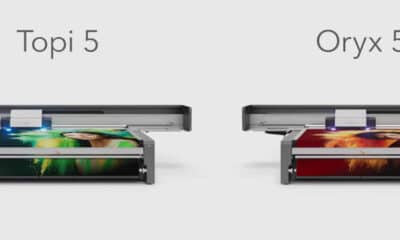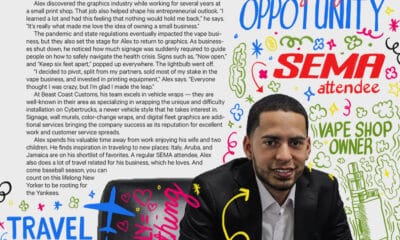WE’VE ALL HEARD the saying, “Build a better mousetrap, and the world will beat a path to your door.” This idea — credited to Ralph Waldo Emerson — suggests superior. But in today’s fast-paced digital world, especially in fields like wide-format printing and specialty graphics, this mindset dangerously is outdated.
Let’s explore why the “better mousetrap” myth no longer holds and how businesses can adapt to survive in an era where product life cycles collapse faster than ever.
The Original Myth vs. Modern Reality
The “better mousetrap” concept emerged in the 1800s, when innovation moved slowly. Emerson’s journals praised craftsmanship, suggesting quality alone would attract customers. For decades, this worked. For example, the modern snap-trap mousetrap (patented in 1894) dominated markets for over a century. Sadly, today innovation alone isn’t enough.
Here’s why the myth fails today:
- Competition is more fierce: More than 4,400 mousetrap patents exist yet most fail. Similarly, 33% of new products flop due to poor market fit or pricing.
- Customer needs shift faster: In the analog era, a product could thrive for decades. Now, generative AI accelerates trends, shrinking life cycles to weeks or even days.
- First-mover advantage is fleeting: Even breakthrough ideas face copycats. As Theodore Levitt noted in Harvard Business Review, innovators often lose to fast followers.
In specialty graphics, this plays out daily. A novel printing technique might dominate for months — until AI-driven competitors replicate it or consumers pivot to new trends.
The Four Phases of Product/Service Life cycles
Let’s clarify the life cycle stages using the classic example of the light bulb and relate it to modern specialty graphics’ challenges.
1. Invention. “Created in the Lab” Phase (First Principles, Not Commercial)
What it is:
Invention is the raw, initial concept — the “light bulb moment” (pun intended). It’s the proof-of-concept where an idea is tested for feasibility, not profitability. Think Thomas Edison’s early carbon-filament bulb: it worked in controlled lab conditions but lacked real-world infrastructure. He famously tried 10,000 variations before he found something that worked.
Key traits:
- Focused on solving a technical problem (e.g., “How do we create sustained electric light?”).
- No commercial infrastructure exists yet (e.g., no factories, supply chains, or sales teams).
Common in R&D labs or startups chasing grants.
Specialty graphics example:
A chemist invents a UV-resistant ink that won’t fade in sunlight. It works in small batches but can’t yet scale to wide-format printers.
2. Extension. Building the Commercial Ecosystem (Infrastructure, Not Variations)
What it is:
Extension is the phase where the invention gets connected to the real world. It’s not about improving the product itself — it’s about creating the systems needed to make it usable and sell-able.
Light bulb analogy:
Edison’s bulb was useless without:
- Electrical grids (power plants, wiring standards)
- Hardware (sockets, switches, meters)
- Support services (electrician training, billing systems)
Specialty graphics example:
That UV-resistant ink needs:
- Printers modified to handle its viscosity
- Packaging that prevents drying during shipping
- Training for operators to avoid nozzle clogs
Why it matters:
Without extension, even brilliant inventions gather dust. More than 70% of patented ideas fail at this point due to underestimating infrastructure costs.
3. Evolution. Iterating the Product (Variations + Upgrades)
What it is:
Now that the invention is commercialized, evolution focuses on improving the product itself through iterations, driven by competition or customer feedback.
Light bulb analogy:
- 1st evolution: Tungsten filaments (longer-lasting than carbon).
- 2nd evolution: Fluorescent tubes (energy-efficient alternative).
- 3rd evolution: LEDs (smaller, cooler, smarter).
Specialty graphics example:
The UV ink evolves to:
- Faster curing times (for high-volume jobs)
- Expanded color gamut (matching Pantone values)
- Compatibility with recyclable substrates
Key risk: Over-evolving. Adding unnecessary features can complicate workflows.
4. Demise. Obsolescence by Disruption (Not Decline — Total Replacement)
What it is:
Demise occurs when a technology becomes irrelevant because something fundamentally better replaces it. It’s not a slow decline — it’s a market shift.
Light bulb analogy:
Trad-itional bulbs are now dying because:
- OLED surfaces (wall-sized “smart lights” that display videos)
- Li-Fi systems (light waves that transmit data)
Specialty graphics example:
UV inks face demise if:
- AI-driven laser etching eliminates ink entirely.
- Self-healing films with embedded digital displays replace printed graphics.
Why it’s critical: Clinging to dying tech wastes resources. Monitor signals like patent expirations or competitor pivots.

PHOTO: ISTOCKPHOTO
Why This Matters in Specialty Graphics
- Invention ≠ Commercial Success. That nano-textured substrate you’re hyped about? It’s worthless without extrusion tools and installers trained to handle it.
- Evolution ≠ Extension. Adding metallic finishes to a film (evolution) is different from building a global distribution network (extension).
- Demise is inevitable. Analog billboards died when digital screens offered real-time ad swaps. What’s next? Maybe AR projections replacing vehicle wraps.
By mapping your innovations to these phases, you’ll avoid pouring money into “better mousetraps” that lack ecosystems to sustain them — or missing the warning signs of looming demise.
In the past, these phases spanned years. Today, generative AI compresses them into weeks. For instance, AI now can draft product designs, simulate test data, and predict market trends in days — slashing time-to-market but shortening profitability windows.
Why Generative AI Changes Everything
Generative AI isn’t just a tool — it’s a disruptor. Here’s how it impacts specialty graphics:

The downside? Speed breeds instability. For example:
- A printing company might launch a groundbreaking textile ink, only for AI competitors to reverse-engineer it in weeks.
- Customer preferences shift rapidly as AI-powered tools flood markets with alternatives.
This creates a paradox: innovation is easier but riskier. As one ICL expert noted, “Optimizing a pipe saved $6 million annually — no tech wizardry required.” Small, agile tweaks often outperform moonshot ideas.

PHOTO: ISTOCKPHOTO
Defending Against Collapsing Life cycles
To survive, businesses must adopt an “If This, Then What?” mindset. Here’s how:
- Prioritize adaptability over perfection
Use modular designs (e.g., printers with swappable AI modules).
Invest in digital PLM (Product Life cycle Management) tools to track real-time data.
- Leverage AI for predictive insights
Analyze historical sales to forecast demand. Example: One wide-format firm used AI to identify high-profit niches, boosting retention by 20%.
Simulate “What-if” scenarios. What if UV curable inks fall out of favor? What if clients demand AR integration?
- Embrace incremental innovation
Improve existing products (e.g., adding recycled content to substrates).
Repurpose old tech. Example: Retrofitting cutters with AI-driven precision tools.
- Build hybrid teams
Pair creatives with data scientists to balance artistry and analytics.
Train staff to use AI tools ethically, avoiding compliance risks.
- Plan for demise upfront
Design products for easy recycling or upgrades.
Monitor life cycle metrics like “time to obsolete” using AI dashboards.
Moving Beyond First Principles
First-principles thinking (breaking ideas to basics) isn’t enough. Instead, ask:
- If AI halves our product’s life cycle, then what steps mitigate risk?
- If a competitor clones our product, then what unique value can we add?
The “better mousetrap” myth assumes a slow, static world. In reality generative AI and digital tools have turned product life cycles into sprints. To compete, specialty graphics firms must focus on speed, adaptability, and strategic foresight. The goal isn’t to build a perfect product — it’s to create systems that evolve faster than the market.
In my next article, I’ll share tactical models for implementing this mindset, from AI-driven prototyping to dynamic pricing models. Stay ahead, or risk obsolescence.
Advertisement


 Applications2 months ago
Applications2 months ago
 Business Growth: Mark Coudray4 weeks ago
Business Growth: Mark Coudray4 weeks ago
 Events3 weeks ago
Events3 weeks ago
 Expert Perspectives2 months ago
Expert Perspectives2 months ago
 Headlines1 month ago
Headlines1 month ago
 Women in Wide Format2 weeks ago
Women in Wide Format2 weeks ago
 Women in Wide Format3 weeks ago
Women in Wide Format3 weeks ago
 Line Time7 days ago
Line Time7 days ago




















